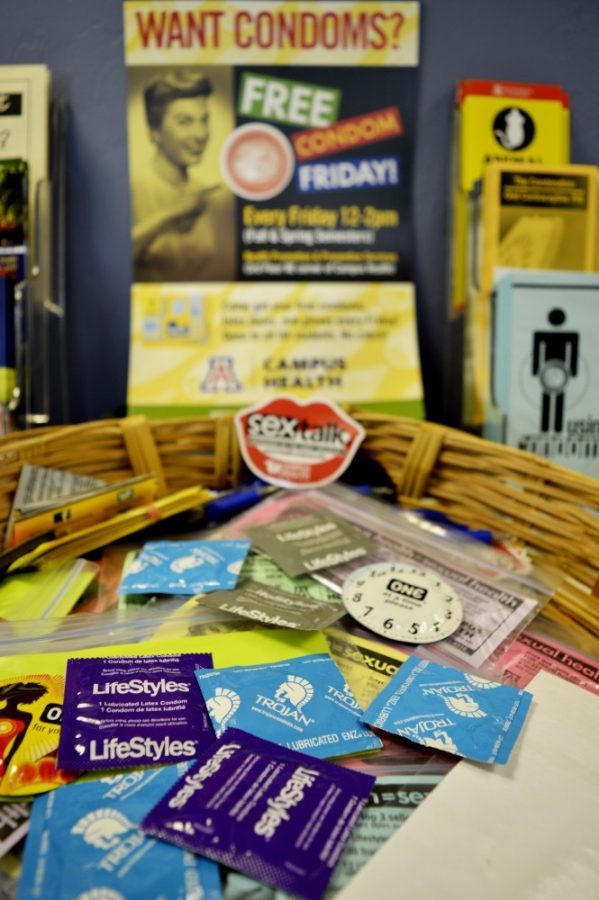Despite popular belief, the UA is one of the best universities in the country when it comes to sexual health.
According to David Salafsky, director of Health Promotion and Preventive Services at Campus Health Service, about 68 percent of students say they are usually always using a condom when engaging in sexual intercourse.
Looking back all the way to the early 2000s, there has been a slow increase of students admitting to using condoms, but this percentage is pretty typical to what Campus Health has been seeing over the last few years.
This could be for a number of reasons.
According to the 2015 Campus Health and Wellness Survey, 35 percent of students are exclusively dating one person—which can have an effect on their method of birth control.
“Some percentage of those students are in committed, monogamous relationships and maybe they’re using some other form of birth control or they’ve already been tested, so STD prevention is not maybe as high a priority given the relationship,” Salafsky said.
Jolene Main, a criminal justice sophmore, and her boyfriend have been in a committed relationship for over a year. She agrees with Salafsky when it comes to wondering why the percentage of students wearing condoms is not higher.
“Many couples may not want to wear a condom because they are very comfortable with each other and trust in each other,” Main said. “They may also feel much more physically, and may achieve a better-feeling orgasm.”
As for STIs, it is difficult for Campus Health to accurately know if there have been any recent increases or decreases, and though there have been increases of certain STIs within Pima County, it has not reflected the same increase on campus.
“I think when we look at things, our numbers are on a basis just of students that come in and get tested,” Salafsky said. “Obviously we want everybody to get tested who is sexually active, but that’s not reality.”
However, Campus Health certainly is doing its part.
According to the 2014 Trojan Sexual Health Report Card, the UA is ranked fourth out of 140 colleges and universities throughout the country. The report is an annual ranking of the sexual health resources and information available to students on campuses nationwide.
Salafsky makes it clear that, despite what people would think, condom usage and STIs among students at the UA have leveled out , and they are doing all they can to keep it leveled, or bring the percentage down for STIs and up for condom usage.
“I think sometimes there’s this perception that everyone is having a lot of sex on college campuses,” Salafsky said. “There certainly is a small percentage of students who are engaging in a lot of sexual activity, but overall, I think it’s surprising for people to see that most people are dating or not having sex, and then there’s a large percentage who are having sex with maybe one or two partners.”
Follow Elisabeth Morales on Twitter









